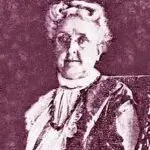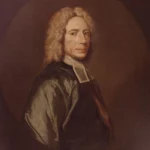Lesson Focus: This lesson will help you live in joyful anticipation of Christ’s return and spending eternity in heaven with Jesus.
No More Negatives: John 14:1-3.
[1] "Let not your hearts be troubled. Believe in God; believe also in me. [2] In my Father’s house are many rooms. If it were not so, would I have told you that I go to prepare a place for you? [3] And if I go and prepare a place for you, I will come again and will take you to myself, that where I am you may be also. [ESV]
[1-3] Jesus looks beyond the trouble the disciples are about to enter and reassures them. In verse 1 Jesus instructs His disciples to stop being troubled. These words are to be taken in close connection with the preceding chapter. Peter has been thrown into consternation at the prediction of the threefold denial, and we cannot doubt that this had its effect on the others also. If Peter was to deny Jesus did not that mean that some great trial was imminent? Moreover Jesus had spoken of His impending departure, a departure to a place where they could not follow. To men who have left everything for their Leader to be told that He is about to leave them is shattering. They are all very disturbed. And Jesus knows that within a few short hours they will be even more disturbed. So He tells them to be calm. He gives the disciples two commands: Believe in God; believe also in me. Jesus is urging His followers to continue to believe in the Father and to continue to believe also in Him, and in this way not to let their hearts be troubled. We should not miss the challenge implied in the call to have faith in Jesus Himself. It is one thing for the disciples to have faith in God who acted in days of old. It is another to have faith in Jesus who stands before them, especially when He is about to be betrayed by one of His followers, denied three times by the chief of them, abandoned by the rest, and crucified by His enemies. My Father’s house clearly refers to heaven. Rooms indicates permanent residences and emphasize the bliss and permanence of heaven. Many gives the sense that there is room to spare for all the redeemed in heaven. If it were not so underlies this point. There is not the slightest doubt about it. I go to prepare a place for you emphasizes the certainly of what Jesus is saying to His disciples. His followers can trust in the fact that Jesus is going to prepare a place for each of them in heaven and they can thus find comfort in this truth to deal with the troubled times that lay ahead for them. The fact that Jesus is leaving to prepare a place has consequences. If Jesus goes for such a purpose He will come again. The reference to the second advent should not be missed. It is true that John does not refer to this as often as do most other New Testament writers, but it is not true that it is missing from his pages. This is not to deny that John uses the idea of “coming” in more senses than one, nor that in a very real sense Jesus comes to His followers in the here and now. But the thought is not confined to this life. Nothing is said about the nature of the place that Christ prepares. It is sufficient for the believer that he will be with His Lord.
No More Unknowns: Revelation 21:1-4; 22:1-5.
[1] Then I saw a new heaven and a new earth, for the first heaven and the first earth had passed away, and the sea was no more. [2] And I saw the holy city, new Jerusalem, coming down out of heaven from God, prepared as a bride adorned for her husband. [3] And I heard a loud voice from the throne saying, "Behold, the dwelling place of God is with man. He will dwell with them, and they will be his people, and God himself will be with them as their God. [4] He will wipe away every tear from their eyes, and death shall be no more, neither shall there be mourning, nor crying, nor pain anymore, for the former things have passed away." [22:1] Then the angel showed me the river of the water of life, bright as crystal, flowing from the throne of God and of the Lamb [2] through the middle of the street of the city; also, on either side of the river, the tree of life with its twelve kinds of fruit, yielding its fruit each month. The leaves of the tree were for the healing of the nations. [3] No longer will there be anything accursed, but the throne of God and of the Lamb will be in it, and his servants will worship him. [4] They will see his face, and his name will be on their foreheads. [5] And night will be no more. They will need no light of lamp or sun, for the Lord God will be their light, and they will reign forever and ever.
[21:1-4] Isaiah concludes his prophecy by promising that God would create new heavens and a new earth [Isaiah 65:17]. This was picked up in 2 Peter 3:13, where the fiery destruction of the old heaven and earth would lead to new heavens and a new earth in which righteousness dwells. If sin had not entered the world, the first creation would have sufficed. Since it was in bondage to corruption [Rom. 8:21], however, it had to be replaced. The primary themes in Isaiah 65:17-22 are joy (both God’s and His people’s) and the removal of sorrow and suffering. God’s joy is never mentioned in Genesis 1-3, so His joy over His new heaven and new earth is all the more remarkable. These themes of joy and newness dominate John’s portrayal as well. This is only the first of many allusions from Isaiah in this section. In 21:1 there is a major contrast between new and first, with new emphasizing more qualitative newness than temporal newness, as first does. There will be a whole new reality, a new kind of existence in which all the negatives of the first heaven and first earth will be removed, all the discoloration by sin will be gone. The added thought that the sea was no more seems out of place and unnecessary in light of heaven and earth passing away. But in John’s Revelation sea is often linked with Death and Hades [see 20:13]. The sea as a symbol of evil would best explain why it is added here. In the new order, not only will the old creation be gone, but evil will be no more. The false trinity and the nations that caused so much suffering will have been cast into the lake of fire, so temptation and pain will be gone forever. When the new heaven and new earth are in place, then the holy city, new Jerusalem can come down. The phrase new Jerusalem occurs only in 3:12 and 21:2 in the Bible, but the concept has a broad history. Behind this are several passages from Isaiah, Ezekiel, and Zechariah. This new Jerusalem will be a joy to God in which he can rejoice [Isaiah 65:18-19]. Thus, the descent of the new Jerusalem from heaven here is the fulfillment of a prophetic expectation with a rich history. Now the heavenly temple descends from heaven to earth in the form of a city and becomes the eternal home of the saints. In its beauty and joy, the city is prepared as a bride adorned for her husband. An unidentified loud voice from the throne now interprets the significance of the heavenly city for the believers. Again, themes drawn from the Old Testament predominate. Indeed, the covenant established at Sinai is now fulfilled, as seen in the Holiness Code of Leviticus 26:11-12: I will make my dwelling among you … and I will walk among you and will be your God, and you shall be my people. This promise was repeated often in the Old Testament [Ex. 29:45; Jer. 31:33; Ez. 37:27; 43:7-9; Zech 2:11; 8:8] as a note of comfort for God’s beleaguered people. Behold is a call to pay especially close attention. The first part of the promise, the dwelling place of God, is a virtual translation of “Shekinah,” typified in the cloud and pillar of fire at the exodus and symbolized in both the tabernacle and the temple. Most of all, Shekinah meant communion between God and His people, and it was finalized in two stages, first when the Word became flesh and dwelt among us [John 1:14], and second here as the Shekinah dwells with His people. In Christ the Shekinah became incarnate, and here communion between God and His people becomes physical and absolute, as God will dwell with them. God will no longer dwell high and lifted up above His people but will now tabernacle in their midst. The rest of verse 3 expands this basic idea: they will be his people and God himself will be with them as their God. This promise was fulfilled partially in the new covenant of Jesus and finally in the New Jerusalem. It is only in the eternal reality that we will know this completely and finally. After the eternal covenant is presented, the benefits belonging to the saints who form and inhabit the new heaven and new earth are presented in verse 4. They center on the peace and joy God will give His people. First, God will wipe away every tear. These are more the tears of suffering and sacrifice than tears of regret [see 7:15-17]. Second, God will remove the sources of sorrow: death shall be no more, neither shall there be mourning, nor crying, nor pain anymore. There will be everlasting joy and bliss, for the debilitating effects of sin and suffering have been taken away. John is now describing that time when the redemption of our bodies will have been accomplished. This is the universal hope that has comforted the saints down through the ages. The concluding thought ties it all together: this has occurred because the former things have passed away. All these things (death, mourning, crying, pain) were part of the first world and have no place in the new world. In a sense, 21:1-4 is framed with this wondrous truth; the new eternal reality has occurred because God has caused all the former things to pass away.
[22:1-5] In 21:9-10 the angel showed John the Bride, the wife of the Lamb … the holy city Jerusalem. Now the angel shows John the next installment of the glorious vision of the final eternal reality, the regained Eden. In Genesis 2:10 a river flowed from Eden to water the garden, but life was restricted to the tree of life [Gen. 2:9; 3:22-24]. Here there is not only the tree of life but the river of the water of life. In Genesis the river flowed out of Eden, but here it flows from the throne of God. Eden has become one with the city. The background is not only Genesis but also Ezekiel 47:1-12, where a river flows from the south of the altar in the renewed temple and turns everything it touches fresh, even salt water, so that living creatures and fish flourish. This life-giving water is also emphasized in John 4:10-14 (Jesus as the living water) and 7:37-39 (the Holy Spirit as streams of living water). In Revelation 7:17 the Lamb leads the victorious saints to streams of living water, and in 21:6 God gives to believers the spring of the water of life freely. All of these images are combined in the river of the water of life here. The added note that this water is bright as crystal parallels the crystal-clear sea of glass of 4:6, the crystal-clear jasper of 21:11, and the goldlike pure glass of 21:18, with the added image of brightness emphasizing the glory of the final Eden. All of these images symbolize the purity, holiness, and transcendent glory of God. The source of this river is God Himself (flowing from the throne of God). Once more God and the Lamb are juxtaposed, continuing the major Christological theme of the unity of God and Christ as deity. The throne, out of which the water of life flows, belongs equally to God and the Lamb, as also in 22:3, where the throne of God and of the Lamb is in the city. The word throne occurs forty-five times in this book and is one of the central motifs, symbolizing the sovereign rule of God as judge of the world and protector of His people. Here in the New Jerusalem it stresses the nearness of God to His people. This great river of life in 22:2 will flow through the middle of the street of the city. Life is the primary characteristic, with both the river of life and the trees of life defining the main thoroughfare of the eternal city. The tree of life will produce twelve kinds of fruit, a fruit for each month. Normally, fruit appears at its proper season, but in the final Eden there will be no seasons, and abundant fruit will be available every month. This continues the imagery of 21:4: there will be no more death, mourning, crying, or pain, and there will be no more hunger. All needs will be met for all eternity. But not only does the tree of life provide food; its leaves also provide for the healing of the nations. This does not mean that healing is still needed. Rather, it symbolizes the healing that has already occurred at the eschaton and descending of the eternal city. This probably refers both to physical healing and spiritual healing. In most of the Old Testament curse referred to the judgment of total destruction pronounced against the nations and apostate Israelites. Thus, here it could refer also to the removal of God’s curse against the repentant from the nations who enter the eternal city. As in 1:5; 5:9; and 12:11, the curse has been removed because of the blood sacrifice of the Lamb. Thus, there will be absolute security in the New Jerusalem. In verse 1 the river flowed out from the throne of God and of the Lamb. Now in verse 3 we are told again that the throne of God and of the Lamb will be in the city. By framing verses 2 and 3 with the centrality of the divine throne, John is saying that everything the city means to the saints – eternal life, abundant provisions, complete healing, and absolute security – are made possible by the sovereign presence of God and the Lamb among His people. Moreover, since the king is there, it is natural that his servants will worship him. John describes the New Jerusalem as a restored Eden where the redeemed will fulfill God’s original intention for the creation of man: They will serve and worship God and the Lamb whose glory will fill the city. Not only will the saints worship God; they also will see his face. There are three stages in terms of looking on the face of God: (1) Moses could not look on the face of God because God had declared, man shall not see me and live [Ex. 33:20]. (2) John 1:18 says, No one has ever seen God; the only God, who is at the Father’s side, he has made him known. (3) Here in the eternal city, God’s people will finally be able to see his face. Jesus provided the transition because He was the incarnate Shekinah [John 1:14] who was the “face of God” on earth. Yet there is also a spiritual aspect of seeing the face of God. The idea of “seeing God” became a catch phrase for a true understanding of who God is and a right relationship with Him [Job 33:26; Ps. 17:15; 42:2,3; 3 John 11] and was considered a special eschatological blessing. Thus, this is the culmination of some of the greatest hopes of the Bible. In the transformed Eden, God’s people will both live eternally and see His face. They will also have his name … on their foreheads. The name or mark on the forehead denotes ownership, status, and protection. The saints will be a people for his own possession [1 Peter 2:9]. In Revelation 2:7 the saints are promised a new name, and that name will be given to them by God, whose name will be on their foreheads. To draw together and conclude the vision, John repeats images found respectively in 21:25 and 23. From 21:25 comes there will be no night there. This seems to sum up the negative affirmations of 21:23-27, which allude to the fact that the effects of sin – night, the gates shut, impurity, shame, deceit – will be gone forever. The gates are always open, and it is perpetual day [21:25]. Moreover, there is no need for the light of the lamp or of the sun, for the Lord God gives them light [21:23]. In this world of darkness, light must come from the sun or from lamps. In the eternal world of light, the presence of God will fill eternity with His glory. In this world, the saints must bear the light of God to the places of spiritual darkness, but in the Holy City His light comes directly from His presence. Finally, in the light of the divine presence, the saints will reign forever and ever. This probably means we will participate in the rule of Christ over the eternal kingdom.
Life As It Should Be: Revelation 22:12-14.
[12] "Behold, I am coming soon, bringing my recompense with me, to repay everyone for what he has done. [13] I am the Alpha and the Omega, the first and the last, the beginning and the end." [14] Blessed are those who wash their robes, so that they may have the right to the tree of life and that they may enter the city by the gates. [ESV]
[12-14] The soon return of Jesus is obviously a major emphasis of the epilogue [22:7,10,12,20], reiterating the prologue [1:1,7]. It is also the basis for the warnings of 22:10,14-15. The nearness of the Parousia throughout the New Testament is the basis for the call to ethical commitment. Since Christ is returning soon, we had better be ready at all times, lest He find us unprepared like the ten virgins [Matt. 25:1-13] or the servant who wasted his talent [Matt. 25:14-30]. This is stressed in the rest of verse 12, for Christ says that when He comes He will bring my recompense with me. Here Christ’s recompense or reward is eschatological and relates to the eternal recompense that will be given believers for their faithful walk with Christ. God and the Lamb will vindicate and reward their people for all that they have sacrificed and for all they have done for Him. It may be that the recompense is meant exclusively of the faithful while the second part (repay everyone for what he has done) expands this to refer to both groups from verse 11, the wicked and the righteous. But the grammar does not point this way. The absence of any conjunction between recompense and repay everyone means that verse 12 is a single statement rather than consisting of two parts. However, a careful study of recompense shows that it does not automatically refer only to a positive reward. It refers literally to “payment for work done,” and as such it can refer to punishment as well as reward. The idea of “judged according to works” occurs often in Revelation, speaking of both believers and unbelievers. Moreover, this theme is frequent in the Old Testament and the New Testament. The idea of ethical responsibility and its eschatological consequences is too often ignored in modern preaching and needs to be given more attention. But it must be emphasizes that this is not a “justified by works” theology. It is clear in Scripture that we are saved by grace through faith … not works [see Eph. 2:8-9]. To put both teachings together, “We are saved by grace and judged by works.” The teaching here deals not with salvation by works but with our eternal reward. Verse 13 is the last of the Alpha and the Omega passages. The titles refer to the sovereignty of God and Christ over history. They control the beginning of creation and its end, and therefore they control every aspect of history in between. These are the perfect titles to occur between the emphasis on Christ’s coming as judge in 22:12 and the warnings to the believers and the unregenerate in 22:14-15. Christ is sovereign over all and therefore the one who has authority over the destiny of everyone. In 22:14 the seventh and final beatitude of the book, like the others, emphasizes perseverance in the faith [see 1:3; 14:13; 16:15; 19:9; 20:6; and 22:7]. The one unifying theme in all seven beatitudes is the necessity of remaining true to the Lord in order to participate in the resurrection to eternal life. Wash their robes speaks of spiritual revival, that is, ridding their lives of the accumulated filth of this world and living pure lives before God. The use of the present tense for wash speaks of an ongoing activity that characterizes their lives. This is a recurring theme in the book. Christ gives those who wash their robes a new right or authority to the tree of life, meaning that they have eternal life. The picture here is one of total peace and security, an eternal city that is constantly open to its citizens.
Questions for Discussion:
1. Why are the disciples troubled in John 14:1-3? To comfort them, Jesus issues the twofold command to believe. Why is belief in God and in Jesus the source of comfort? Is this where you look for comfort when you are troubled?
2. What is the meaning of the new heaven and new earth; of the new Jerusalem? What are the benefits or blessings for those living in the new Jerusalem?
3. What picture of the holy city does John draw for us in 22:1-5? What do the river and tree symbolize? What does 22:4 mean: They will see his face, and his name will be on their foreheads? How are these two promises a source of hope and encouragement as you live in this fallen world?
References:
The Gospel According to John, D. A. Carson, Eerdmans.
The Gospel According to John, Leon Morris, Eerdmans.
Revelation, Grant Osborne, Baker.
The Book of the Revelation, Philip Hughes, Eerdmans.

















